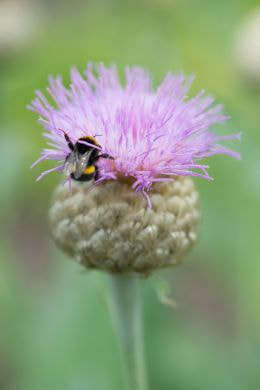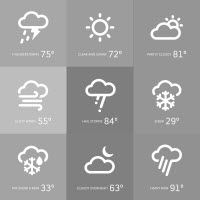Whether you have a garden or a balcony, flowering perennials will create a beautiful haven for bees anywhere. You’ll not only enjoy the companionable buzz of both wild and honeybees, but you’ll also be surrounded by flowers. And you’ll be delighting in your perennials year after year.
Honey plantsMany perennials produce nectar and pollen that provide food for bees. For this reason, they are known as ‘honey plants’. Bees transport the pollen back to the hive in special little baskets on their hind legs. By observing them closely, you can actually see these collected pollen pellets. By buzzing from flower to flower, bees also contribute to fertilisation that results in the production of seeds and fruits.
Signposts for beesBees are irresistibly attracted by the scents and colors of flowers. But many flowers have another trick up their sleeve: a ‘nectar guide’ made up of spots and stripes. Take a close look sometime at the flowers of beardtongue (Penstemon) or cranesbill (Geranium).These honey guides are like signposts guiding bees in for a landing.
DiversityProvide many different kinds of plants that will bloom throughout the year, from lungwort (Pulmonaria) in early spring to Michaelmas daisy (Aster) in the autumn. And make your haven for bees a sea of various colors filled with large flowers mixed among small ones. You’ll be glad you did: these little buzzing visitors will flock to your flowers. For them, it’s a symbiotic relationship. For you, it’s pure enjoyment!
Did you know that...
Honey plantsMany perennials produce nectar and pollen that provide food for bees. For this reason, they are known as ‘honey plants’. Bees transport the pollen back to the hive in special little baskets on their hind legs. By observing them closely, you can actually see these collected pollen pellets. By buzzing from flower to flower, bees also contribute to fertilisation that results in the production of seeds and fruits.
Signposts for beesBees are irresistibly attracted by the scents and colors of flowers. But many flowers have another trick up their sleeve: a ‘nectar guide’ made up of spots and stripes. Take a close look sometime at the flowers of beardtongue (Penstemon) or cranesbill (Geranium).These honey guides are like signposts guiding bees in for a landing.
DiversityProvide many different kinds of plants that will bloom throughout the year, from lungwort (Pulmonaria) in early spring to Michaelmas daisy (Aster) in the autumn. And make your haven for bees a sea of various colors filled with large flowers mixed among small ones. You’ll be glad you did: these little buzzing visitors will flock to your flowers. For them, it’s a symbiotic relationship. For you, it’s pure enjoyment!
Did you know that...
- Bumblebees are included in the group also known as ‘wild bees’?
- Various bee species have a preference for certain plant species? Sage (Salvia), lavender (Lavandula), knotweed (Persicaria), indigo lupine (Baptisia) and sneezeweed (Helenium) are just a few of the perennials that bees love.
- The pollen produced by every plant species has its own color?
- The amount of nectar produced by flowers fluctuates throughout the day?
- More inspiration and tips about perennials are available at www.perennialpower.eu

